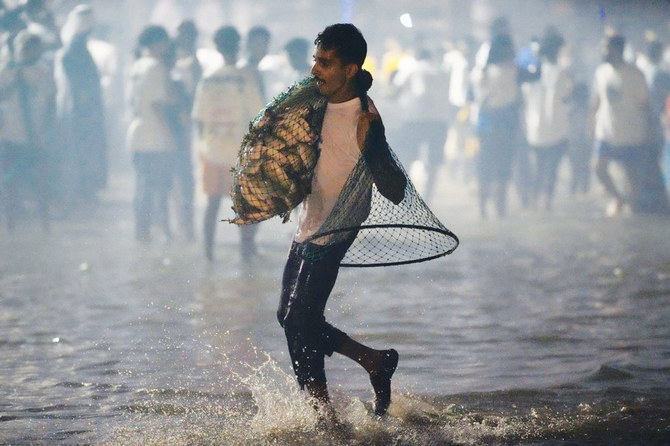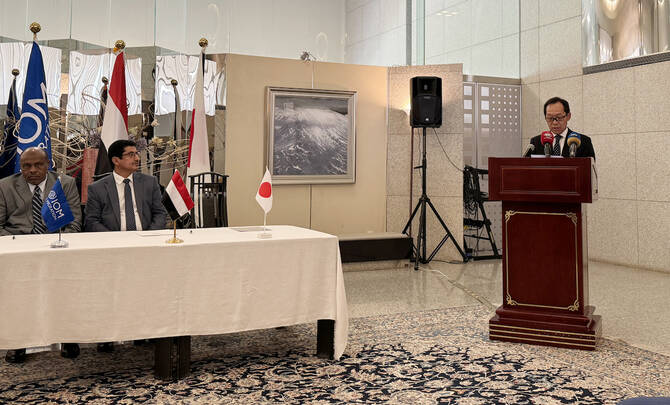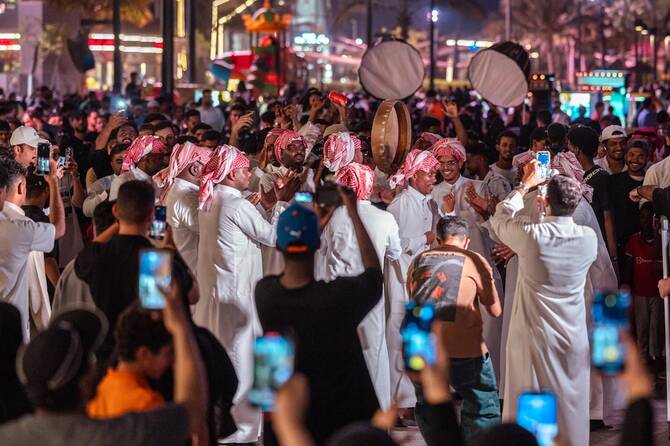Nada Hameed
JEDDAH: Every year around this time, fishermen from the Jazan region, specifically Farasan Island, prepare for a festive fishing season called Kunnah, derived from the Arabic word for kingfish, kana’ad.
Kunnah season indicates the beginning of summer and continues until the end of June.
It witnesses an abundance of fish of different types, including the kingfish and parrotfish or Hipposcarus harid.
Farasan Island is located 50 km offshore from Jazan, the far southwestern part of Saudi Arabia, and is among the largest islands in the Red Sea.
The fishing seasons in the region vary across its territorial waters, extending over the Red Sea, representing about 35 percent of fish production in the Red Sea and about 20 percent of the Kingdom’s fish production.
One of Farasan’s most experienced fishermen, Madani Hunaishi, said people linked the Kunnah season with kingfish because it passed through the islands during its annual migration season from the north side of the Red Sea in Jazan to its southern area, bearing eggs to begin its breeding cycle.
Kingfish are often caught with large nets. But in Jazan they have special fishing rituals. Fishing trips begin at night and the fish are attracted by lighting.
They are caught in huge quantities by Jazan fishermen, then distributed around the Kingdom, including Jeddah and Riyadh, where the larger size of this fish is in high demand.
“Kingfish auctions begin in the central fish markets for the larger sizes, as huge ones are sold at a price ranging between SR600 to SR1,500 ($150 to $400),” Hunaishi told Arab News.
Kunnah season is also known to be the season of the parrotfish. The people of Jazan receive it annually with singing, drums, dancing, and more because of all the bounties that come with it.
In a phenomenon particular to Jazan, Hipposcarus harid gather in shoals swimming in synchronicity to form a giant ball of over a thousand fish.
This year marked the 18th annual Harid fishing festival, which is held in the region to celebrate the fishing of Hipposcarus harid.
This type of fish features bright colors and different sizes. They change color as they grow, and the color varies between males and females. They are considered parrotlike as they have teeth that they use to scrape food off coral reefs.
The National Center for Wildlife tweeted an infographic saying that this group of coral reef fish inhabited coastal areas of tropical oceans such as the Western Indian Ocean, the Red Sea, and the waters around Mozambique, Madagascar, Seychelles, Sri Lanka, and the Maldives.
Jazani people have been familiar with this annual phenomenon for generations, and this knowledge is how the Harid Festival emerged.
Jazan Gov. Prince Mohammed bin Nasser said during the inauguration of this year’s festival that studies were being conducted on the phenomenon of Hipposcarus harid appearing at this time of the year on the Farasan Islands.
He also said the study would clarify the method of Hipposcarus harid migration, from where it originated to where it arrived, adding that while there was preliminary information, there was a desire to provide in-depth studies on this phenomenon.
Jazan resembles a floating city during the festival due to the large number of fishing boats present and the sea becoming illuminated at night. The activity and events attract visitors from outside Jazan and the Kingdom.
As a result of the many fishing seasons during the year, the Jazan region produces about 11,000 metric tons of fish annually, with over 3,200 fishermen working along the coasts and benefiting from 17 fishing ports.
They sail daily during the season on 1,657 boats, contributing to the investment in fisheries and preserving the fishing profession.
To protect the marine environment from pollution and the water resources in the region, the Fisheries Research Center supervises the sector through inspection tours to control and regulate fishing and stop those who violate the system.






















